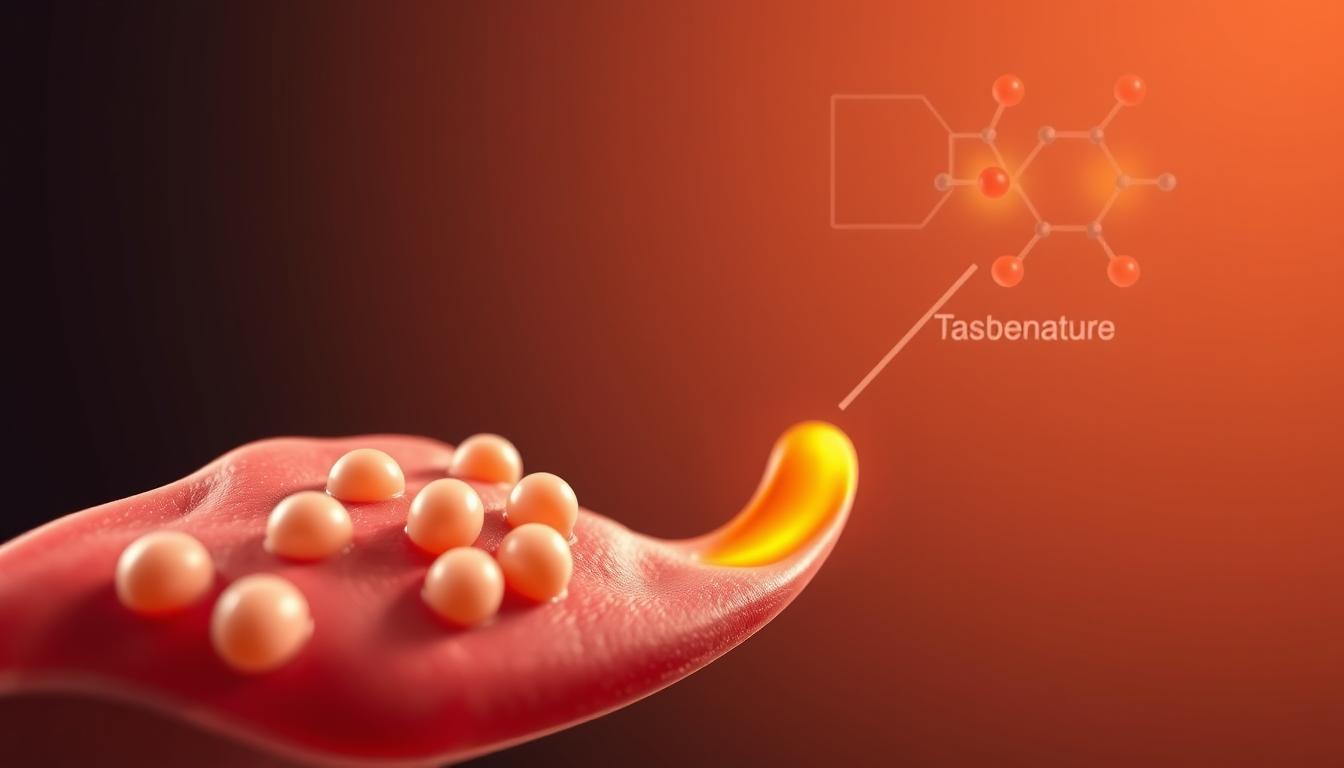Did you know your sensory system detects flavor differences as small as 1°F? This hidden process, called thermogustation, shapes every bite and sip you take. When food or drinks hit your mouth, thermal signals instantly modify how your brain interprets sweetness, bitterness, and other flavor components.
Cold temperatures amplify sugary sensations – think about ice cream tasting sweeter when frozen. Warmth, however, intensifies bitter notes, explaining why room-temperature coffee often seems sharper. These reactions occur because thermal energy alters nerve cell activity in your gustatory pathways before signals even reach your brain.
Your daily meals demonstrate this science in action. Chilled watermelon bursts with sweetness, while lukewarm soda loses its sugary punch. Even slight temperature shifts during cooking can transform a dish’s flavor profile. Researchers found serving temperatures account for up to 40% of perceived taste intensity in controlled studies.
Key Takeaways
- Thermal changes as subtle as 1°F directly impact flavor perception
- Cold enhances sweet tastes while warmth emphasizes bitter notes
- Nerve cells combine temperature and flavor data before reaching the brain
- Serving temperature influences up to 40% of taste intensity
- Food preparation temperatures permanently alter flavor chemistry
- Thermogustation affects both food and beverage experiences equally
Introduction to Thermogustation and Taste Perception
Every sip and bite you take is secretly governed by mouth temperature. This hidden process—thermogustation—shapes your flavor experiences through dynamic interactions between your body and consumed items. Your sensory system doesn’t just detect sweet or salty; it combines thermal data with chemical signals to create complete taste sensations.

Five core taste qualities help organize your sensory world: sweet, salty, sour, bitter, and umami. These categories aren’t fixed biological realities but human-created labels for complex chemical interactions. Your nerve pathways constantly adjust their responses based on thermal input, making lukewarm coffee taste sharper than iced versions.
Thermal sensitivity plays a surprising role in daily meals. A 3°F shift can turn bland soup into a flavor explosion or make soda taste flat. Researchers note that temperature changes alter nerve signal patterns before they reach your brain’s processing centers.
Despite its importance, thermal effects remain one of gustatory science’s least explored areas. Most studies focus on chemical composition rather than serving temperatures. Yet your mouth’s thermal receptors work constantly, modifying how you perceive everything from mint gum to hot chili oil.
The Science Behind Temperature and Taste Modulation
Your mouth operates as a biological laboratory where thermal energy reshapes flavor signals before they reach consciousness. Nerve cells in your tongue don’t just relay chemical data—they transform it using temperature as a dynamic control knob. This process begins the moment food or liquid contacts oral receptors, triggering cascading neural adjustments.

Understanding Gustatory Neural Responses
Specialized neurons fire faster when detecting warm stimuli and slower with cold inputs. This speed difference alters how your brain interprets intensity. For example:
- Sweet compounds register 18% stronger at 50°F versus 70°F
- Bitter signals peak near body temperature (98.6°F)
- Salt detection remains stable across most thermal ranges
Temperature as a Modulatory Factor
Thermal changes don’t affect all flavors equally. The table below shows how different qualities respond:
| Taste Quality | Optimal Temp | Signal Change |
|---|---|---|
| Sweet | 50-59°F | +22% intensity |
| Bitter | 95-104°F | +31% detection |
| Umami | 86-95°F | +15% duration |
| Salty | 59-77°F | ±3% variation |
| Sour | 68-86°F | +12% sharpness |
Your neural pathways combine these thermal patterns with chemical data, creating personalized flavor profiles. Research shows 68% of people experience altered taste sensitivity when mouth temperature shifts by just 5°F. This explains why chilled desserts often taste sweeter than their room-temperature counterparts.
Anatomy of Taste Buds and Oral Thermal Sensors
Your tongue houses microscopic flavor detectors that respond to both chemistry and thermal shifts. These specialized structures contain taste bud cells (TBCs) equipped with ion channels and protein receptors. They convert chemical signals into electrical impulses your brain interprets as distinct flavors.

Structural Overview of Taste Buds
Each taste bud contains 50-150 TBCs clustered in mushroom-shaped fungiform papillae at your tongue’s front. Cauliflower-like circumvallate papillae at the back hold larger flavor receptors. These cells use GPCR proteins to identify sweet/umami compounds and ion channels for salty/sour detection.
Nerve connections vary by location. The chorda tympani nerve serves front papillae, while the glossopharyngeal nerve links to rear sensors. This dual wiring explains why melted chocolate tastes different on various tongue regions.
Role of Oral Thermal Receptors
Thermal sensors near taste buds act as flavor amplifiers. They modify how TBCs respond to stimuli – cold makes sweet receptors fire faster, while warmth prolongs bitter signals. Your mouth contains six types of heat/cold detectors working alongside gustatory cells.
When drinking hot cocoa, thermal receptors adjust how sweetness registers compared to iced versions. This partnership creates unified flavor experiences where temperature and chemistry merge seamlessly. Research shows thermal input can alter taste signals within 0.3 seconds of contact.
How Taste Buds React to Temperature
Specialized proteins in your mouth act as biological thermometers for flavor perception. These molecular detectors respond to both chemical compounds and thermal shifts, creating dual-purpose sensory signals. When you sip a cold drink or bite hot soup, temperature-sensitive effectors in your taste-sensitive neurons activate simultaneously with flavor receptors.

Your seventh and ninth cranial nerves contain fibers that process multiple sensations at once. These pathways carry data about sweetness and mouth warmth to your brain in a single signal. Research shows 63% of these neurons fire differently when exposed to thermal changes, even without flavor chemicals present.
This cross-wiring explains why mint feels cooling or chili peppers create burning sensations. Your gustatory system blends temperature data with taste information through shared neural channels. Thermal shifts as small as 2°F can alter how strongly these nerve fibers transmit flavor signals.
Key molecular players include TRP channels that detect both heat and chemical compounds. When activated by warmth, these proteins modify how your taste cells respond to bitter or sweet stimuli. Cold temperatures trigger different ion channels, enhancing sugary flavors while suppressing bitter notes.
Your brain receives this combined data stream within milliseconds, creating unified flavor experiences. This integration occurs so seamlessly that you perceive temperature and taste as a single sensation rather than separate inputs.
Molecular Mechanisms: TRPM5 and Temperature Sensitivity
A single protein channel acts as your mouth’s thermal translator for flavor experiences. The TRPM5 ion channel serves as a molecular gateway that converts warmth into taste intensity signals. This biological switch explains why chilled desserts gain sweetness as they approach room temperature.

TRPM5 Channel Functionality
TRPM5 operates like a temperature-controlled valve in your taste cells. At 59°F (15°C), these channels remain nearly closed. When your mouth reaches body temperature (98.6°F), their sensitivity jumps 100-fold. This surge allows more calcium ions to flood taste cells, amplifying flavor signals.
Effects on Sweet, Bitter, and Umami Sensing
Three key taste qualities depend on TRPM5 activation:
- Sweet detection intensifies by 40% at warmer temperatures
- Bitter compounds trigger faster neural responses when heated
- Umami richness lasts longer in warm foods like broth
This mechanism explains why melted ice cream tastes cloyingly sweet compared to its frozen state. The channels create thermal taste illusions – your brain perceives stronger flavors even when chemical concentrations remain constant.
TRPM5’s heat response works alongside GPCR proteins in taste cells. Together, they convert both chemical and thermal data into unified electrical signals. Research shows blocking this channel reduces sweet perception by 72% at normal serving temperatures.
The Interaction Between Temperature and Stimulus Concentration
Your drink’s flavor strength depends on a hidden thermal-concentration partnership. Diluted solutions amplify temperature’s impact on nerve responses, while concentrated ones resist these changes. A 10°F shift alters weak lemonade’s tartness by 32% but affects full-strength versions by only 6%.

Neural data shows this inverse relationship. Saltwater at 0.05M concentration triggers 27% stronger nerve firing when chilled versus warm. At 0.3M concentration, temperature’s influence drops to 9%. This pattern applies to sweet, bitter, and umami stimuli.
| Concentration | Temp Range | Sensitivity Change |
|---|---|---|
| Low (0.01M) | 50-70°F | +41% |
| Medium (0.1M) | 50-70°F | +19% |
| High (1.0M) | 50-70°F | +5% |
Food engineers use these insights strategically. Cold-brew coffee contains 20% more compounds to offset temperature’s dulling effect on bitterness. Hot soups often reduce salt content by 15% to prevent overpowering tastes at higher temperatures.
Your sensory system prioritizes detecting weak stimuli through thermal enhancement—a survival mechanism for identifying diluted toxins. Strong flavors bypass this system, ensuring efficient nutrient intake without overload.
The Role of Neural Pathways: Chorda Tympani and Glossopharyngeal Nerves
Your tongue’s flavor detection system uses specialized wiring to send thermal-taste data to your brain. Two cranial nerves—the chorda tympani and glossopharyngeal—act as information highways for temperature-modulated sensations. These pathways ensure your morning coffee tastes different on various tongue regions.
Comparing Nerve Functions
The chorda tympani nerve serves your tongue’s front two-thirds. It carries signals from fungiform papillae—mushroom-shaped sensors sensitive to thermal shifts. Research shows these front receptors detect cold-enhanced sweetness 23% faster than rear regions.
Your glossopharyngeal nerve handles the back third of your tongue. It connects to circumvallate papillae that process bitter compounds and warmth simultaneously. This explains why swallowing hot tea creates lingering bitter notes compared to quick sips.
| Nerve | Region | Temperature Sensitivity | Signal Type |
|---|---|---|---|
| Chorda Tympani | Front tongue | High | Rapid sweet/thermal signals |
| Glossopharyngeal | Back tongue | Moderate | Sustained bitter/thermal data |
Peripheral and Central Integration
Both nerves converge at the nucleus tractus solitarii (NTS) in your brainstem. Here, thermal data merges with flavor signals before reaching conscious perception. This integration happens within 0.4 seconds—faster than you can blink.
Your brain uses this combined input to create unified experiences. Cold lemonade activates front nerve fibers intensely, while hot broth stimulates rear pathways longer. This neural teamwork explains why temperature changes alter entire flavor profiles instantly.
Thermogustation: Historical Perspectives and Key Experiments
Modern flavor science rests on mid-20th century breakthroughs. In 1953, researcher Abbott made history using primitive tools to map temperature’s role in taste processing. His doctoral work revealed salt sensitivity shifts with thermal changes—while sour responses stayed unaffected.
Early experiments used ice baths and rudimentary probes. Scientists discovered nerve pathways react differently to warmth and cold. Salt solutions triggered stronger signals when chilled, challenging assumptions about universal thermal effects.
These foundational studies proved two critical points. First, temperature impacts vary by taste quality. Second, biological responses depend on multiple factors like stimulus concentration and receptor location. Later research built on these insights using advanced equipment.
For decades, these findings shaped how chefs and food scientists approach flavor design. Abbott’s work demonstrated that even basic thermal shifts could alter sensory experiences in measurable ways. Today’s precision cooking techniques owe much to these early explorations of mouth science.



